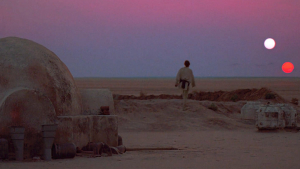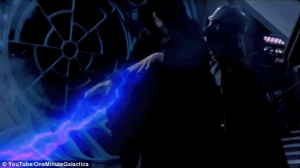It is said with some regularity that working class people in America are invisible to the middle and elite classes. Take for example William Deresiewicz’s essay “The Dispossessed,” in which he argues that the decline of working-class representation in popular culture has led to an ignorance of what a working-class life entails. “The working class,” Deresiewicz says, “ is American culture’s great lost continent.” Or take Heather Buckelew’s editorial in the Stanford Progressive, “Making the Invisible Visible: the Working Class in the Economic Crisis,” in which she posits that the struggles of the working class in the economic climate of 2010 were largely invisible to people outside the working class due to lack of media representation.
Deresiewicz and Buckelew may be right that the middle and elite classes have become disconnected from the poor, but that is by no accounts due a lack of representation in popular culture. In fact, the working class has always defined a fair portion of culture. Just look at the CBS Network’s lineup of sitcoms. Two Broke Girls uses the image of an elite woman’s descent into the working class to demonstrate that the elite are woefully unprepared for the rigors of working class life. Mike and Molly depicts a relationship between a cop and a teacher, showing images to the public of some of the financial hardships faced by the working class while still taking time to show the benefits of a large and tightly-knit family.
But the impact of the working class on these shows is mostly in the final product, as the shows are written, produced, and acted out by members of a higher class (even Mike and Molly producer Chuck Lorre, who had a working class childhood, has distanced himself from it in such ways as changing his surname from Levine due to the low self-esteem that he associated with it). The impact of the working class on culture goes much deeper than writing shows that appeal to the working class: some facets of popular culture are not just for or about the working class, but by the working class.
One interesting example of culture about the working class and by the working class is the original trilogy of the Star Wars saga (episodes IV, V, and VI). Scenes of the working class are coded into the trilogy: Luke Skywalker is the son of a farmer; Han Solo, a smuggler, performs for commission the dirty work required of him by his boss, Jabba the Hut; Even Princess Leia is working class, as she gives up the prospect of a comfortable elite lifestyle to aid the rebellion; there are even scenes of her doing work with her hands, like on Hoth in Empire Strikes Back.
It is of note that Star Wars creator and director George Lucas was the son of a stationery store owner, so he has a distinctly working class background. After the success of the first Star Wars movies, he purchased a property which he calls Skywalker Ranch; the working-class connotations of a ranch suggest that even though he is rich and famous, he is not estranged from his working-class roots, like Chuck Lorre is. Star Wars differs from the CBS comedies, then, in that its depictions of the working class are actually projections of George Lucas’s working class identity, as opposed to guesses at what a working class life might look like. Deresiewicz notes that television has many shows with people who have working class jobs, but live middle class lives; shows for the working class by members of higher classes just aren’t accurate.

Luke was raised on a moisture farm on the desert planet of Tatooine, giving him a distinctly working class upbringing (Source: StarWars.com)
Keeping this in mind, it would be of use to explore the writing of Raymond Williams. In his essay “Culture is Ordinary,” Williams establishes what I have already said; that there is a working class culture distinct from that of higher classes. Williams says that the working class have their own institutions distinct from the institutions of other classes, and that it is an industrial culture focused on “neighborhood, mutual obligation, and betterment.”
That the working class are often ignored by higher classes is not lost upon Williams. He opens “Culture is Ordinary” by using the image of a chained-off library at a cathedral that he is not allowed to enter because of his working-class status to convey this to the reader. The library is a place for the elite and for the clergy — not for the working class. The people who use the library want nothing to do with the working class, but, as Williams goes on to say in another essay, “Working Class Culture,” the joke is on the upper classes.
The reason for this is because the middle and elite class cultures have been visibly influenced by working class culture. So not only is there a working class culture that is distinct from that of other classes, but it’s not the result of the imposition of the latter onto the former (as some have argued); it’s the other way around. The most important thing that the working class have to impose upon the rest of society, according to Williams, is its democratic values — a consequence of the extension of its neighborhood- and family-based social organization.
How is this accomplished? Let’s go back to Star Wars. The trilogy depicts the working class heroes’ role in a rebellion to overthrow the oppressive Galactic Empire. These heroes, and the rebellion as a whole, are imposing their more democratic ideals upon the galaxy. Looking deeper, Emperor Palpatine, the man in charge of the empire, is distinctly elite: he was a prominent senator before he managed to bring about the end of the republic that preceded the Empire. The way Palpatine was able to get all the power of the Galactic Republic for himself — and this is admittedly outside the original trilogy — was by convincing the other elites in the senate to vote to give him their power in a state of emergency, which Palpatine himself had secretly perpetrated. Before it is challenged by the rebellion, the Empire exerts its dominance for some twenty years over the galaxy. That leads to an important observation: Lucas seems to be saying that in the absence of the working class, society will tend toward injustices like those of the Empire. The empire was the result of a lack of working-class representation in the vote which gave then-senator Palpatine power, and the Empire was not challenged until the working class rebelled, overthrew it, and established a new government. It seems, then, that one mode for the spread of democratic values by the working class is by rebellion.

Senator Palpatine wears distinctly elite clothing and is constantly surrounded by other elites in the senate (Source: ponikva.info)
Lucas’s argument about the working class continues in the last sequence with Luke, Darth Vader, and Emperor Palpatine. Luke defeats his Vader, his father, in a lightsaber duel, but refuses to kill him. Palpatine wants Luke to “join the dark side;” His refusal to kill Vader is a refusal to do so, so Palpatine tries to kill Luke using force lightning. Vader, in an act of redemption, picks up Palpatine and throws him into the ship’s reactor, killing him. This move is suicide on Vader’s part due to the lightning, and as he lays dying, he has a final conversation with his son Luke. The Jedi theme plays softly in the background, signalling Vader’s return to the light side of the force.

Darth Vader redeems himself by killing Emperor Palpatine, signalling his redemption from the dark side of the force (Source: Daily Mail)
Before looking into the working class images coded into this scene, we must understand that the Jedi are themselves part of the working class. The only model for the Jedi way of life in the original trilogy is Master Yoda, who lives in solitude and must work to be entirely self-sufficient. When Luke joins him to train, the two exhibit interactions typical of the working class as defined by Williams, forming a family-like bond. The Jedi way is not so different from the working class way.
So Luke, representative of the working class, defeats Vader, somebody who defected from the working class to the elite. The viewer is then made to cheer for Vader as he redeems himself by returning to the Jedi way and killing Emperor Palpatine, which is code for his rejoining the working class. Lucas uses this sequence to create an argument that, one, the working class will emerge superior to the elite (Luke defeats Vader), and two, we should cheer for the working class as it does this (Vader’s redemption). After Vader’s death, he becomes a force ghost, which is the Jedi analog of achieving Nirvana, due to his return to the working class, Jedi way of life (the Force is meant to resemble a deity and the Jedi are the clergy of a religion). If one considers that the that the most ardent practitioners of that religion are granted an ultimate afterlife, it’s like Lucas is saying that the best way to get to heaven is to be working class.
George Lucas’s Star Wars, then, is an argument for the working class. If Williams is to be believed, the people of the middle and elite classes aren’t aware that they are partaking something that is working class when they watch the movie, but nevertheless, they are unknowingly consuming something that they would otherwise try to distance themselves from. In fact, more than that, they’re cheering for the very working class culture that they’ve tried to make invisible. Deresiewicz and Buckelew are unintentionally correct that the working class is invisible. What they mean to say when they say this is that the working class is unrepresented, which seems to be untrue, given that one of the most popular movies of all time is about the working class. The working class is invisible to the middle and upper class, but this actually allows it to secretly impose upon these classes its institutions and its ideals of a democratic society.
Sources:
Deresiewicz, William. “The Dispossessed.” The American Scholar. Phi Beta Kappa, 1 Dec. 2006. Web.
Buckelew, Heather. “Making the Invisible Visible: The Working Class in the Economic Crisis.” The Stanford Progressive, Jan. 2010. Web.
Williams, Raymond. “Working Class Culture.” In The Uses of Literacy: Aspects of Working Class Life”, by Richard Hoggart (1957).
Williams, Raymond. “Culture is Ordinary.” 1958.